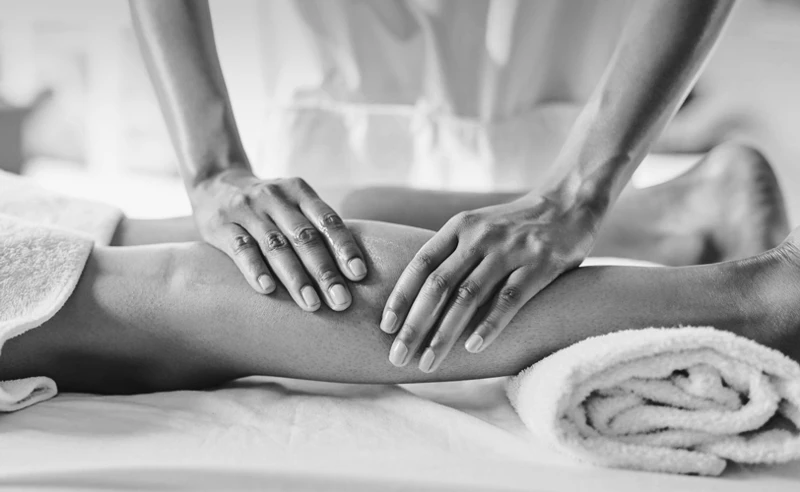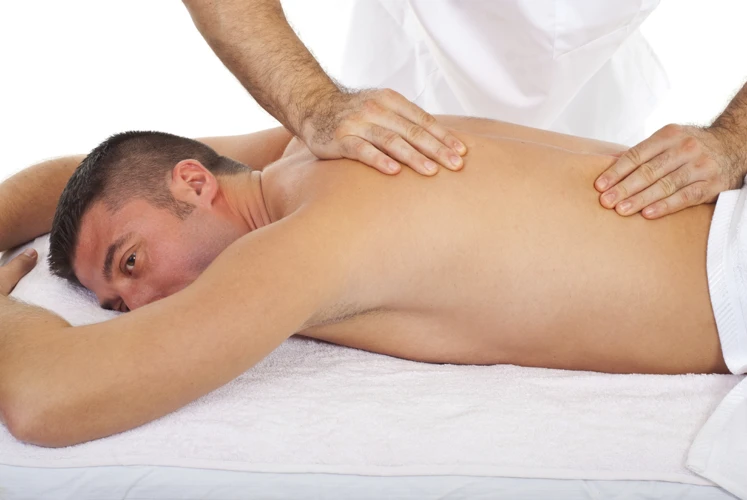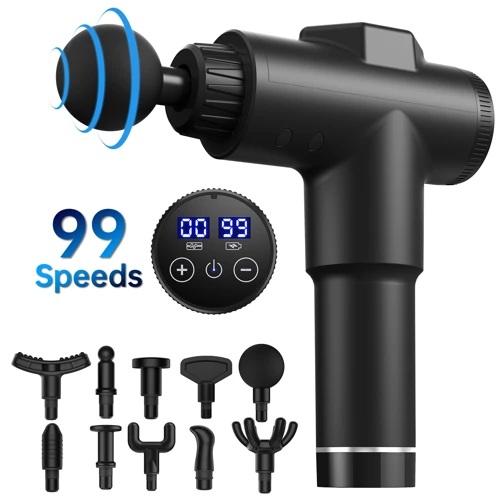Are your muscles sore after a workout? Are you experiencing discomfort due to lactic acid buildup? If so, you may benefit from a massage to help reduce lactic acid levels and alleviate muscle pain. This article will provide a step-by-step guide on how to massage lactic acid out of muscles and provide relief from soreness. Learn how to properly and effectively massage lactic acid from your muscles to reduce pain, improve athletic performance, and increase your range of motion.
Contents
Benefits of Massaging Lactic Acid Out of Muscles

Massaging lactic acid out of muscles can provide many benefits, from improved blood circulation to decreased inflammation. Here are some of the main benefits of massaging lactic acid out of muscles:
- Decreased muscle soreness: Massaging lactic acid out of the muscles helps reduce muscle soreness caused by overworking the muscles. This can help improve the recovery process, allowing you to continue working out without feeling as much pain.
- Improved blood circulation: Massaging lactic acid out of the muscles helps to improve blood circulation, which helps to improve the overall health of the muscles. This can help to reduce the risk of muscle strain and injury.
- Decreased inflammation: Massaging lactic acid out of the muscles helps to reduce inflammation, which can help to reduce pain and swelling. This can help to improve your overall physical performance.
- Improved flexibility: Massaging lactic acid out of the muscles helps to increase flexibility, which can help to reduce the risk of injury and improve overall performance. This can also help to improve your range of motion, allowing you to move more freely.
- Improved recovery time: Massaging lactic acid out of the muscles helps to reduce recovery time, allowing you to get back to your regular activities more quickly. This can help to reduce the amount of time you need to take off from your regular activities.
In addition to these benefits, massaging lactic acid out of the legs can also help to improve how to massage lactic acid out of legs. By massaging the legs, you can help to improve the circulation and reduce the tension in the muscles, which can help to reduce the risk of injury and improve the overall performance.
Preparing for Massage

| Step | Description |
|---|---|
| 1 | Choose a Massage Type. Choose from Swedish, deep tissue, and sports massage techniques, depending on your preference and the severity of your lactic acid buildup. |
| 2 | Choose a Massage Oil. Massage oils are essential for optimal massage therapy. Select one that suits your needs and preferences. |
| 3 | Position Yourself Comfortably. Lie down on the massage table, face up, and make sure the table is at the right height for your therapist. |
| 4 | Let Your Therapist Know. Inform your therapist of any health issues, injuries, or allergies you may have before the massage begins. |
Prepare for the massage by lying down in a comfortable position and alerting the masseuse about any health issues. Ensure the table is at the right height for the therapist and pick the massage type and oil according to your preference and the severity of lactic acid buildup.
Massaging Lactic Acid Out of Muscles: Step-by-Step Guide

Warm Up
Warming up the muscles before massaging them is essential for a successful massage session. This helps to increase blood flow, which reduces the risk of injury and makes the muscles more relaxed.
Use a Massage Tool
Using a massage tool can make the massage easier and more comfortable. There are several different types of massage tools available, such as foam rollers, massage balls, and massage sticks.
Start with Light Pressure
Start with light pressure when massaging the muscles, as this helps to get the muscles used to the sensation. Gently move the massage tool over the area and gradually increase the pressure as you go.
Massage in a Circular Motion
Using a circular motion to massage the muscles helps to target the lactic acid in the muscles and helps to move it out.
Move to the Muscles You Want to Treat
Once you have warmed up the muscles, move to the muscles you want to treat. Focus on the areas that are tight and sore and massage them for a few minutes.
Use More Pressure
Once you have warmed up the muscles, you can use more pressure to work out the lactic acid. Apply firm pressure and move the massage tool in slow, circular motions.
Use Long Strokes
Using long strokes to massage the muscles helps to break up the lactic acid and release it from the muscles. Move the massage tool in slow, steady strokes.
Increase the Pressure
Gradually increase the pressure as you massage the muscles to help break up the lactic acid and flush it out of the muscles.
Massage for Several Minutes
Continue to massage the muscles for several minutes to ensure that the lactic acid is released.
Rinse and Repeat
Repeat the massage several times to ensure that all of the lactic acid is released from the muscles.
Massaging Lactic Acid Out of Legs
Warm Up
Start by warming up the muscles with gentle stretching or foam rolling. This will help to prepare the muscles for the massage and reduce the intensity of the sensation.
Use a Massage Tool
Using a massage tool such as a foam roller, tennis ball, or massage stick can help to target specific muscle areas. This can allow for a more controlled and effective massage.
Start with Light Pressure
Begin with light pressure, slowly increasing the intensity as needed. This will allow the muscles to adjust to the massage and reduce the risk of injury.
Massage in a Circular Motion
Using circular motions will help to break up the lactic acid build-up, allowing it to be released from the muscles.
Move to the Leg Muscles
Focus the massage on the main leg muscles, such as the quadriceps, hamstrings, calves, and glutes.
Use More Pressure
As the massage progresses, use more pressure to help break up the lactic acid and release it from the muscles.
Use Long Strokes
Use long, sweeping strokes that go in the direction of the muscle fibers to help break up the lactic acid.
Increase the Pressure
Gradually increase the pressure as the massage progresses to help work out the lactic acid.
Massage for Several Minutes
Massage the legs for several minutes, or until the lactic acid has been released.
Rinse and Repeat
Rinse off the massage tool, then repeat the massage for the opposite leg.
Frequently Asked Questions
What types of massage are best for relieving lactic acid build-up?
Swedish Massage: This type of massage uses long, gentle strokes and kneading to help relax the body and reduce tension. It helps reduce lactic acid build-up by increasing blood flow and circulation.
Deep Tissue Massage: This type of massage uses deep, firm pressure and strokes to target deeper layers of muscle and tissue. This helps to break up lactic acid and release tension in the muscles.
Trigger Point Massage: This type of massage focuses on specific points of tension in the body. It helps reduce lactic acid build-up by releasing the tension in the muscles and improving circulation.
Myofascial Release: This type of massage uses gentle, sustained pressure to target tight, painful knots. It helps to reduce lactic acid build-up by releasing tension in the muscles and improving circulation.
Sports Massage: This type of massage is specifically designed for athletes. It uses deep, firm pressure and strokes to help reduce lactic acid build-up and improve performance.
How often should I massage my muscles to help release lactic acid?
- Immediately after exercise: Massage your muscles as soon as possible after working out to help release lactic acid.
- Daily: Massage your muscles for five to 10 minutes daily to help keep lactic acid levels low.
- Weekly: Schedule a massage session once a week to help release lactic acid buildup in your muscles.
Massaging your muscles regularly can help keep lactic acid levels low and reduce muscle soreness. Make sure to use massage techniques that are specifically designed to help reduce lactic acid buildup.
What techniques should I use to help reduce lactic acid pain?
Massage is an effective way to reduce lactic acid pain. Techniques such as kneading, rubbing, and circular motions can help to break down lactic acid in the muscle fibers, thus easing pain and releasing tension. Stretching before and after massage can also help to reduce lactic acid pain and improve flexibility. Additionally, foam rolling, a form of self-massage, can be beneficial in reducing lactic acid pain. Applying ice or heat to the affected area can help to improve circulation, reduce inflammation, and reduce pain.
Are there any precautions I should take when massaging lactic acid out of my muscles?
When massaging lactic acid out of your muscles, it is important to take the following precautions:
- Listen to your body: Pay attention to your body and stop if you experience any pain or discomfort.
- Start slowly: Begin with light pressure and gradually increase the intensity as your body allows.
- Use the right technique: Use the appropriate massage technique (e.g. effleurage, petrissage, or tapotement) for the area you’re working on.
- Be gentle: Avoid using too much pressure and be careful not to cause any damage to your muscles.
- Be consistent: Massage lactic acid out of your muscles on a regular basis to ensure optimal results.
Following these precautions will help ensure that you are able to safely and effectively massage lactic acid out of your muscles.
What are some tips for maximizing the effectiveness of massage for lactic acid relief?
- Pressure: Applying pressure to the affected muscle can help relieve lactic acid buildup. Start with small, gentle pressure, and gradually increase the intensity as the muscle relaxes.
- Frequency: Massaging the affected muscle multiple times a day can help reduce lactic acid buildup. The more frequent the massage, the faster the lactic acid will be removed.
- Technique: Using a massage technique such as effleurage, kneading, and petrissage can help to reduce lactic acid buildup in the muscles. Alternate between these techniques for the best results.
- Heat: Applying heat to the affected muscle can help reduce lactic acid buildup. Use a heating pad or a warm compress to help loosen the muscle and reduce lactic acid.
- Stretching: Stretching before and after a massage can help to reduce lactic acid buildup. Stretching helps to loosen the muscle, allowing the lactic acid to be released more easily.
- Hydration: Drinking plenty of water before and after a massage can help to reduce lactic acid buildup. Water helps to flush out toxins, allowing the body to release lactic acid more quickly.
Conclusion
Massaging lactic acid out of muscles is a simple and effective way to reduce muscle soreness and fatigue. Taking the time to perform this massage technique on a regular basis can help to improve muscle recovery after exercise and reduce the risk of future injury.

